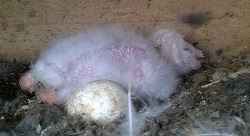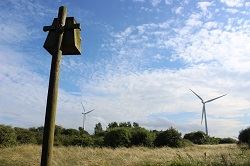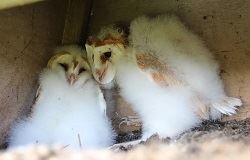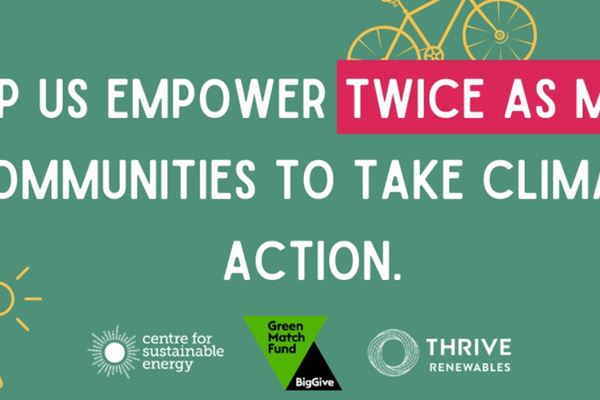There had previously been a barn owl box on the site, installed on Wessex Water’s pumping station by the Hawk and Owl Trust many years ago. The pumping station is situated right next to one of the wind turbines so, before building work began this box, plus others at the site, were moved to a new location about 400 metres from the wind turbine.
Barn owls were known to use the existing box for breeding prior to the construction of the turbines but have not been recorded breeding on site since the boxes were relocated and the turbines built. The Landmark Practice, who monitor the ecology of the site on behalf of Thrive Renewables, were therefore pleased to find two owlets last month, which are thought to have hatched around the beginning of June. The owlets, which are now seven to eight weeks old, will be competent fliers at around ten weeks old, but will remain close to the nest box until they disperse at around 13 weeks old.
The planning process for the turbines was heavily influenced by wildlife at and around the site. The scheme therefore included measures designed to ensure that there was minimal impact was caused by the addition of the wind farm. This latest development shows that the measures taken have sustained the existing wildlife interest at the site, providing the sensitive conditions needed by barn owls to breed.
Despite the urban setting, the Avonmouth site is a stronghold for wildlife, with rough, grassland areas which are perfect for owls and their prey, including small rodents like voles. While barn owls are traditionally associated with farmland, they are equally suited to brownfield sites as long as they have access to good quality foraging and resting habitat.
“We’re delighted to see owls flourishing on the Avonmouth wind farm site. The owlets at Thrive’s Avonmouth wind farm show the success of the habitat protection and enhancement strategy at the site. With good project planning, wildlife and wind turbines are not only compatible – wind farms can provide positive ecological enhancement.” - Bernice Roberts, Director of The Landmark Practice
“We take the impact of our sites very seriously, both environmentally and socially. The success of breeding owls at Avonmouth demonstrates that the measures we put in place to protect the environment we build on are working. We hope the owlets will continue to use the site as their home!” - Adrian Warman, Operations Manager, Thrive Renewables
The Landmark Practice, a local environmental consultancy, has been involved in the management of this project from the beginning. They completed the ecological surveys which supported preparation for the planning application for the wind turbines, and managed the complex relocation of a range of wildlife, including water voles, great crested newts, slow worms and grass snakes, from the building works of the turbines into designated wildlife areas across the site. Landmark continues to monitor the bird interest at the site, which has shown that the wind turbines have not affected the use of the site, which includes important waterbodies, by birds, another encouraging sign of how wind turbines and wildlife can coexist.






